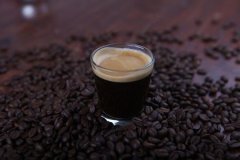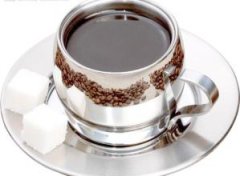Brief introduction to altitude and Climate of Coffee Brand planting in Fuyin Manor in Indonesian Coffee Manor

Coffee critic Chris Rubin said, "the aroma of the wine is so rich and strong, and the coffee is incredibly rich, almost like syrup." Its thickness and chocolate taste, and lingering on the tongue for a long time, pure aftertaste. "
Coconut cats are omnivorous animals. In addition to eating seeds, they also eat insects and snakes, birds, amphibians and reptiles [2] [3], so the feces emitted by really wild coconut cats will be mixed with all kinds of substances. Local farmers in Indonesia catch coconut cats to raise them and feed coffee beans to make them. But after all, there is a difference between artificial cultivation and natural ones.
In the early 1970s, Java cut down Arabica trees introduced by most Dutch and planted Robbosa beans instead. Since then, Java coffee has become greasy, plain and has a strong smell of wheat and tea. Of the few remaining Arabica estates, Djampit is the most famous. These beans are similar to other Indonesian beans, but they are more sour and less textured. Robusta beans from Java have a unique smell and are often used as a recipe for espresso because they are rich in oil. Although the production of Arabica coffee beans in Java is very small, it is favored by many coffee lovers.
Sulawesi, Celebes coffee beans
Sulawesi's old name is Celebes, and the most common famous coffee is the Toraja Taraga coffee beans produced in the center of the island. Toraya is very similar to the first-class Sumatra, except that the texture is slightly less rich, acidity and brightness are also slightly higher, as for the famous wild mushroom flavor and meticulous herbal flavor of Indonesian coffee. Indonesian Sulawesi Sulawesi (Celebes) Kalossi Kalosi coffee beans still look a little bigger than Manning.
In particular, there is a special kind of animal in the Indonesian mountains: the civet, because it makes Indonesia produce almost the most expensive coffee in the world-civet coffee, also known as Kopi Luwak. This kind of cat likes to eat coffee berries, and hard coffee beans are eventually excreted because they are indigestible. During the period of passing through the digestive tract, coffee beans are fermented to produce a unique and complex aroma. Many foodies like this kind of coffee with special aroma, which is extremely expensive because of its low output.
Kopi Luwak, also known as civet coffee, Kopi Luwak or coffee alamid, also known as civet coffee (according to the Malay translation, Kopi means coffee, Luwak means civet), is the world's most expensive coffee beans, native to Indonesia. Seventeen grams is about two hundred Hong Kong dollars.
Kopi Luwak is produced by the feces of Indonesian coconut cats (a kind of civet) as raw materials, so it is called "Kopi Luwak". This kind of animal mainly feeds on coffee beans. After completing fermentation in the coconut cat's stomach, it destroys protein, produces short peptides and more free amino acids, reduces the bitterness of coffee, and then excretes feces as the main raw material. Because coffee beans cannot be digested, they are excreted and Kopi Luwak is made after washing and baking.
Important Notice :
前街咖啡 FrontStreet Coffee has moved to new addredd:
FrontStreet Coffee Address: 315,Donghua East Road,GuangZhou
Tel:020 38364473
- Prev

A brief introduction to the treatment of the Grinding degree of Fine Coffee in Indonesian Coffee Manor
In the 1880s, 0 merchants deliberately tampered with some fresh Guatemalan or Venezuelan beans to imitate aged Java for high prices. It is intolerable that 0 merchants dye coffee beans to make them look more like old Java, but there is no doubt that the dyed chemicals are certainly toxic. Java produces only a small amount of Arabica beans, mostly after the rust disaster
- Next

A brief introduction to the balanced and refreshing coffee flavor and aroma characteristics of La Tisa Manor in Guatemala
If a person's wrinkles depict a person's path, then the smell of coffee remembers the origin of a cup of coffee: about its hometown, the time of harvest, the way it is roasted and ground, that is, the lifetime journey of coffee. Guatemala's fertile volcanic soil gives birth to a unique flavor of boutique coffee beans: Antigua coffee. The charm of Antigua is that it is balanced and refreshing.
Related
- Does Rose Summer choose Blue, Green or Red? Detailed explanation of Rose Summer Coffee plots and Classification in Panamanian Jade Manor
- What is the difference between the origin, producing area, processing plant, cooperative and manor of coffee beans?
- How fine does the espresso powder fit? how to grind the espresso?
- Sca coffee roasting degree color card coffee roasting degree 8 roasting color values what do you mean?
- The practice of lattes: how to make lattes at home
- Introduction to Indonesian Fine Coffee beans-- Java Coffee producing area of Indonesian Arabica Coffee
- How much will the flavor of light and medium roasted rose summer be expressed? What baking level is rose summer suitable for?
- Introduction to the characteristics of washing, sun-drying or wet-planing coffee commonly used in Mantenin, Indonesia
- Price characteristics of Arabica Coffee Bean Starbucks introduction to Manning Coffee Bean Taste producing area Variety Manor
- What is the authentic Yega flavor? What are the flavor characteristics of the really excellent Yejasuffi coffee beans?

